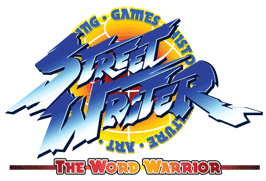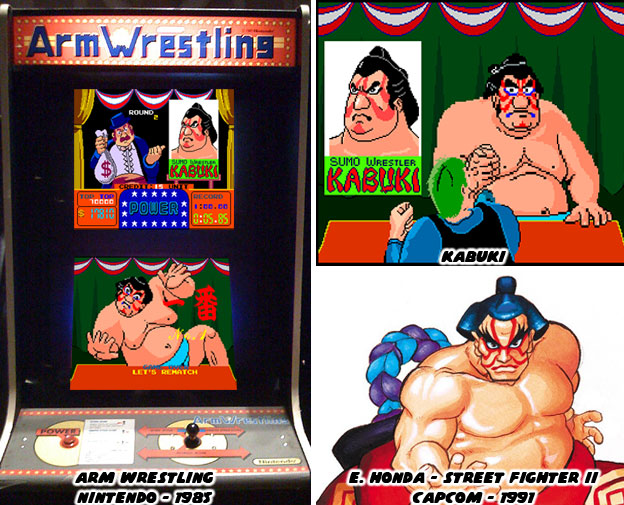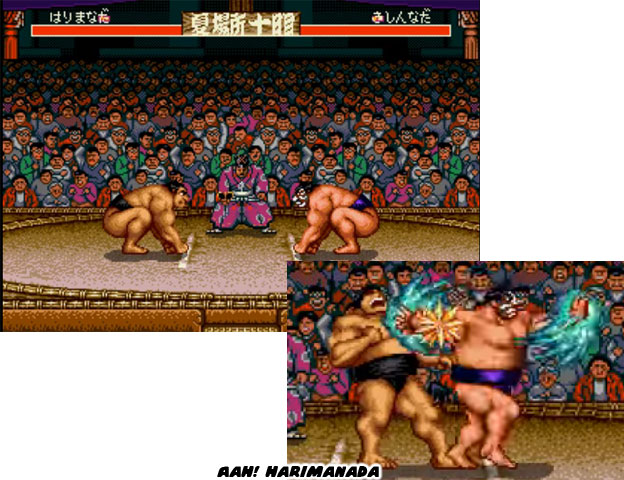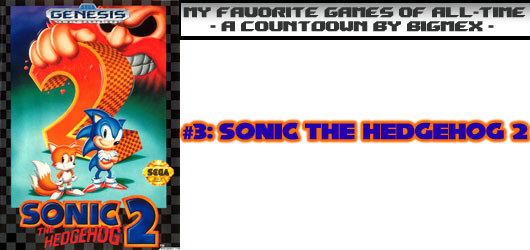
These are the games that define me, the games that I consider my favorite of all-time.
Number three is a lock. Sonic the Hedgehog 2 by Yuji Naka and Sonic Team. Yuji is the only man to make the list twice and both times in the top-10. He really put Sega on the map as far as console gaming goes. Yu Suzuki may be the undefeated Sega arcade champ but his work on home consoles falls short of Yuji's. Don't even tell me that Shenmue was better than anything Naka did because it would be a lie.
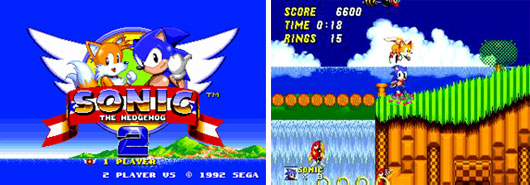
Super Mario Bros. was fun for it's day, but each consecutive Mario game felt like the previous one. Levels were always stacked, plain, Mario went left to right and on occasion donned suits that game him special powers. Still, each world, each level felt like the last with minor changes to the color palette. We were growing up but it felt like Mario was not.
I don't believe the hype in Sonic as a character with 'tude meant for the jaded Nintendo gamers.
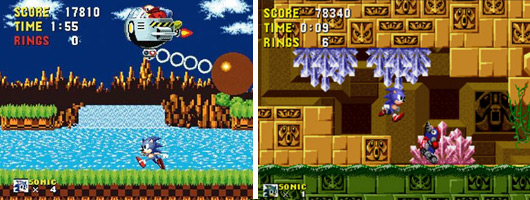
For the first time that I could remember I was excited to run on levels because of minor changes in elevation and pitch. Think about it for a second. Previous to Sonic, most games were very two dimensional, every stage was literally a platform. There were no hills, dips, bumps or grades. Go diagonal while running? Never in a million years!
Sonic broke the mold and the blue hedgehog became less like Mario jumping up and down between platforms and more like an electric pinball whizzing here and there on a roller coaster track. Some said it was a gimmick, others called it disorienting sliding down tunnels and shooting across a level. I thought it was genius and platforming evolved.
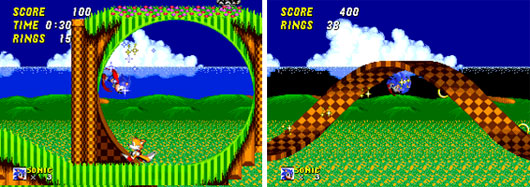
Just as amazing as the level design was the second player that Sonic had. A little buddy, almost the tag-along little brother in "Tails." His twin tails could propel him forward to follow Sonic through the levels and help him from time to time. Tails could be controlled by a second player and this would come in handy when trying to collect rings during bonus rounds. It would be years before Luigi would join Mario in the middle of a game...
The game still had Sonic trying to defeat Eggman (Dr. Robotnik) but just like the previous title you also had to collect Chaos Emeralds. The original Sonic game had chaos emeralds stuck inside a perpetually rotating room, while disorienting, the level was actually quite cool. This time the emeralds were at the end of a long, pseudo 3D race track. Mixing side scrolling with 3D racing shattered the concepts of what could be done in a console game. Sonic could still run on walls and even flip himself 360 degrees on the track, Naka had broken the third dimension and there was never any going back.
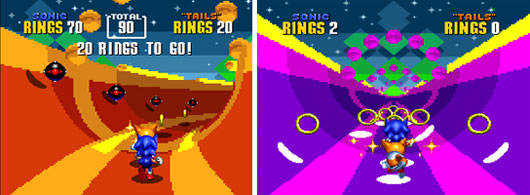
Some levels had multiple paths, hidden secrets, blast tunnels and trap doors. Credit where credit is due, learning to play each level became an art. Gamers with experience could not only beat levels quickly, they could also collect Chaos Emeralds and defeat most of the enemies in one fell swoop. Of course no two zones played exactly alike. Some required small steps and timed jumps, others flat out speed. Deconstruct the zones and see how logical this type of level design became. Naka introduced the world to a new way to game, sorry to say but Mario had become antiquated.
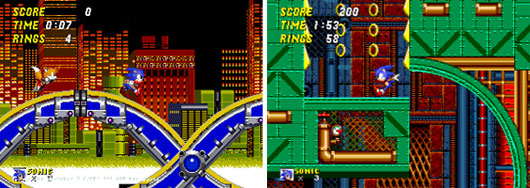
This type of epic game was told within the span of a few levels on a few-megabyte cartridge and featuring things never before seen on a platformer. Themes of the levels and plot would return time and time again not only in the Sonic games but in other titles from the industry as well. Yuji had raised the bar in Sonic 2, the effects of which remain to this day.
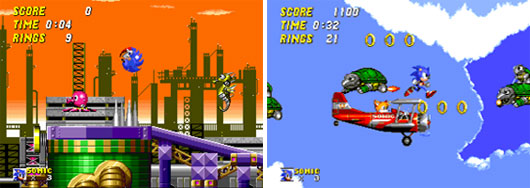
From buggies to tanks, drills and helicopters, Eggman threw everything he had at Sonic. In the Death Egg level we were treated to an epic boss battle. Eggman fought from inside a giant mechanical suit, complete with missile launcher and spike fists. The sprite of the robot was gigantic, taking up a third of the screen. For the time it was easily one of the largest sprites and boss characters ever. This "David versus Goliath" battle helped lend tremendous scope to an already epic game.
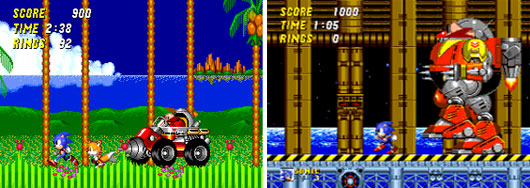
In the end it was one design that turned a great sequel into one of my favorite games of all-time... Super Sonic. You could beat the game without ever collecting one Chaos Emerald. Or you could go for broke and collect all of them. The reward for doing so was unlocking a supercharged Sonic. The ending of the game even changed to show off Sonic's new ability. Did I mention that Mario had become antiquated by then?
Upon collecting 50 rings, after gathering all of the Chaos Emeralds, in a level Sonic would turn "super" when he jumped. He was impervious to harm and able to fly through levels faster than ever before. The effects and animation associated with Super Sonic were brilliant. Super Sonic was without a doubt an homage to Dragon Ball Z, which at the time had the main character Son Goku evolve into a "Super Saiyan." This featured many of the same properties and looks that Sonic had inherited. A nod to the genius of Akira Toriyama aka "Dr. Slump," the creator of Dragon Ball Z.

I never looked back.
Sonic the Hedgehog 2 will remain one of my favorite games of all-time for ever and ever.
Sorry Mario.
I hope you get a chance to play it and hopefully become Super Sonic yourselves. Until next week take care and have a great weekend!
I’d like to hear your personal top-10, top-20, top fighting games, top sports games, or top games in any genre. Let me know in the comments section please. As always if you would like to sponsor me please visit my Patreon page and consider donating each month, even as little as $1 would help make better blogs and even podcasts!
